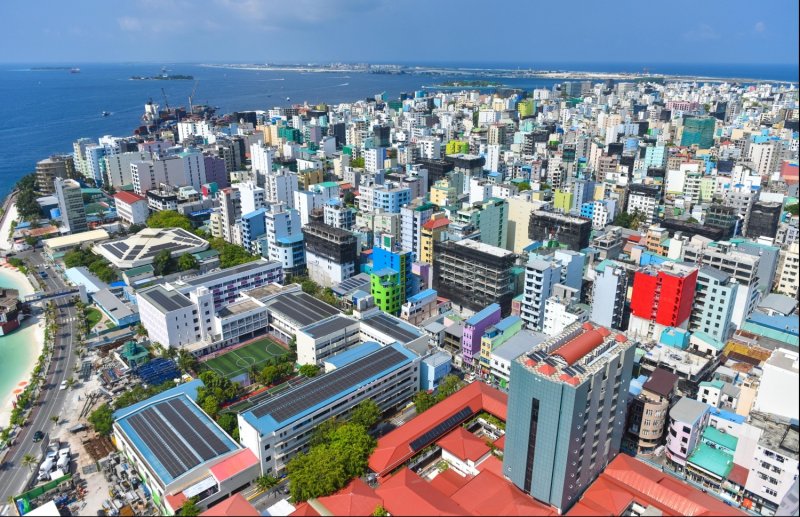
What is the debt situation of Maldives really like?
Just few weeks back, the Deputy Speaker of Parliament emphasized the need to clarify the Maldives' debt situation. Let’s break down what’s happening in simpler terms.
I earn, but my debt is more than what I earn.
According to the Quarterly Debt Bulletin (2024, Q1) published by the Ministry of Finance, the Maldives' total public debt increased by MVR 2 billion in the first quarter of 2024. Even though the debt-to-GDP ratio fell from 116.5% to 110.1%, the country still owes more than it produces. It’s like earning a certain amount but owing much more than that.
I have borrowed heavily from creditors.
As of the first quarter of 2024, the government’s outstanding debt is MVR 126.18 billion. This debt is split between external debt (foreign lenders) (MVR 51.62 billion) and domestic debt (local lenders) (MVR 74.55 billion). The government has had to borrow more both internationally and domestically to cover its expenses.
I have my loans taken from many banks.
The Maldives' biggest external creditors include the Export-Import Bank of India, Export-Import Bank of China, the Saudi Fund for Development, the International Development Association, and the Asian Development Bank. The largest domestic creditors are the Commercial Bank with MVR 27.73 billion, Financial Corporations holding MVR 27.15 billion and the Central Bank of Maldives (Maldives Monetary Authority) holding MVR 14.98 billion.
I took a home construction loan, bank agreed to release funds in installments within a specified duration. Some disbursements are made and others are pending.
There are also significant committed but undisbursed funds, totalling MVR 24.2 billion. Most of this, 64.9%, comes from the Exim Bank of India. These funds are like loans for home construction that have been approved but not yet fully given out. However, the debt figure is likely to increase with more funds expected to be released.
I took a loan and let my friends and family borrow from me.
The government has taken loans for state-owned enterprises (subsidiary loans). The biggest beneficiaries are Maldives Airports Company Limited (MVR 9.1 billion), Housing Development Corporation Limited (MVR 1.3 billion), and Fenaka Corporation Limited (MVR 439.5 million). Other beneficiaries include STELCO, Island Aviation Services, MMA, MTCC, and BML.
I am paying my loan amount, including the interest amount.
In the first quarter of 2024, the Maldives spent MVR 2.2 billion on debt repayments. This includes MVR 1.2 billion in principal repayments and MVR 939.7 million in interest payments for the central government’s debt. For government-guaranteed foreign debt, the service cost was MVR 1.15 billion, which includes principal and interest payments.
A large portion of my household budget goes to loan repayment.
Currently, on average, the government spends 20-25% of its annual revenue on debt repayments. This high percentage shows just how much of the government’s income is consumed by debt, leaving less for other expenses.
Majority of my loans are not expensive and I have some time to pay back my loans.
The average implied interest rate on the debt is 3.88%, which is relatively low. The average time to repay this debt is about 8 years, providing some long-term stability.
What is the economic situation on the home front?
Tourism, the lifeline of the Maldivian economy, is seeing a shift. More tourists are choosing guesthouses over resorts, prompting some resorts to lower their prices. This change could adversely impact tourism revenue.
Government spending on development projects has also dropped. By May 2024, only MVR 2.1 billion was spent on development, down from MVR 4.8 billion the previous year—a 56% decrease in economic activities domestically.
Internationally, India, upon the request from the Government of Maldives agreed to roll over USD 50 million of maturing debt for an additional 1 year, with more requests pending. However, China has refused to restructure its debt, indicating that any restructuring might limit future borrowing.
According to the Maldives Monetary Authority (MMA), there has been an increase in banks’ lending money to the private sector, with a large part of which accounts for credit cards and instalment schemes related to debt by private individuals. There is a 27% increase, associated with an increase in credit card withdrawals and borrowings.
My friends and family advise me on risks and debt management strategies.
The IMF on completion of the 2024 Article IV Mission to the Maldives in February 2024 appreciated the efforts of the Maldives government for its homegrown fiscal reform agenda which included putting an end to printing money worth up to MVR 4.4 billion from the Public Bank Account (PBA) by end of 2023. The IMF called to expedite subsidy reforms that phase out existing subsidies and replace them with targeted direct income transfers, Aasandha—healthcare reform, reprioritization and rationalization of public sector investment program (PSIP), and SOE reforms, and committed to urgently implement this.
On 20 May, during a discussion on the World Bank report ‘Scaling Back and Re-Building Buffers’, representatives of the World Bank highlighted that the country’s current account deficit is expected to increase which also requires reform to change the course of the country’s economy and obtain the funds needed for the budget. He also warned that with huge debts still pending, an unfortunate disaster could further exacerbate the country's present situation, going on to point out that the increasing costs of state-owned-enterprises and growing expenditure on these companies by the state, along with increased projects being implemented put further strain on the government financially.
The Maldives' debt situation is akin to a household overwhelmed by debt. Just like a family needs to make tough financial choices, the Maldivian government has been called to consider its spending and revenue strategies carefully. Excessive spending without clear revenue could lead to default while rationalizing costs could offer a path to stability. The choices made now will determine whether the Maldives can navigate this financial storm without going into a situation similar to that of Sri Lanka, which Maldivians consider a second home.


